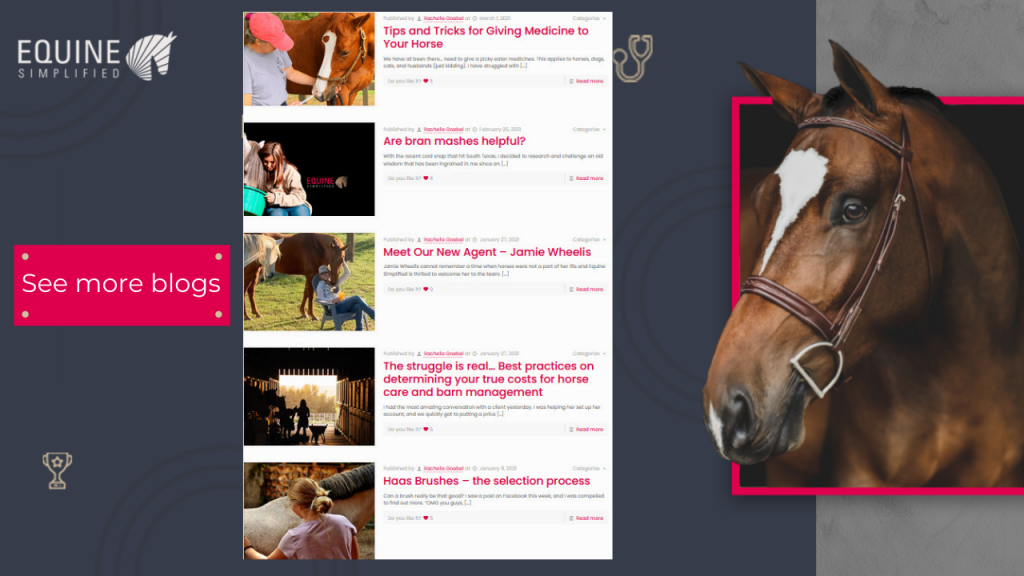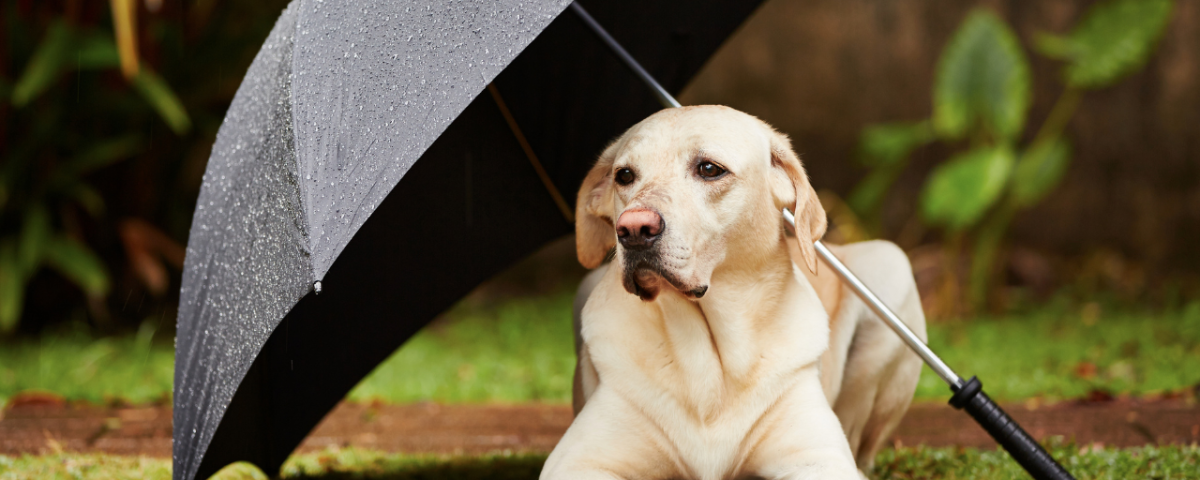
Tips to keep your dog calm during fireworks
December 28, 2022Hurricane Season has started. So, have you started your hurricane preparation to make sure your pets are safe?
To begin, having lived most of my adult life on the Gulf Coast, I appreciate the need for hurricane preparation. At one point in my career, I managed several industrial gas plants all along the Gulf Coast. Even with tremendous hurricane planning, after each storm, we learned something new and added to our preparation plans. And, managing the needs of our pets is no different.
So, I am sharing my planning process. It relates to whether you have one pet or an entire zoo. Even in writing this, I consulted additional resources to make sure there was nothing I was missing. And, I found this year something new and interesting…Wag2Whiskers is helping me with my planning process. This is the first year that I have incorporated Wag2Whiskers in my checklist…so exciting!
Dogs, Cats, and All Other Pets
As I was always taught, take care of your pet before you take care of yourself. Both are important, but in this case, the pet preparation can take a bit longer, thus making it better to tackle first.
Have a plan. What will you do if a major hurricane comes? Will you ride it out or evacuate? Further, do you have places to bring all your pets inside? How will they go potty during strong storm gusts? If you evacuate, where will you take them? These are decisions you should evaluate and make NOW, before the panic of a storm sets in.
If you have large animals and are searching for evacuation sites, please see these websites for Texas and for the East Coast.
Pet documents. Gather all documents and keep them in safe places (and loading them in Wag2Whiskers ensures you can access them from any device). Make sure you have a copy of their vaccinations, especially if you need to relocate a pat. Finally, have all insurance details and vet information readily available.
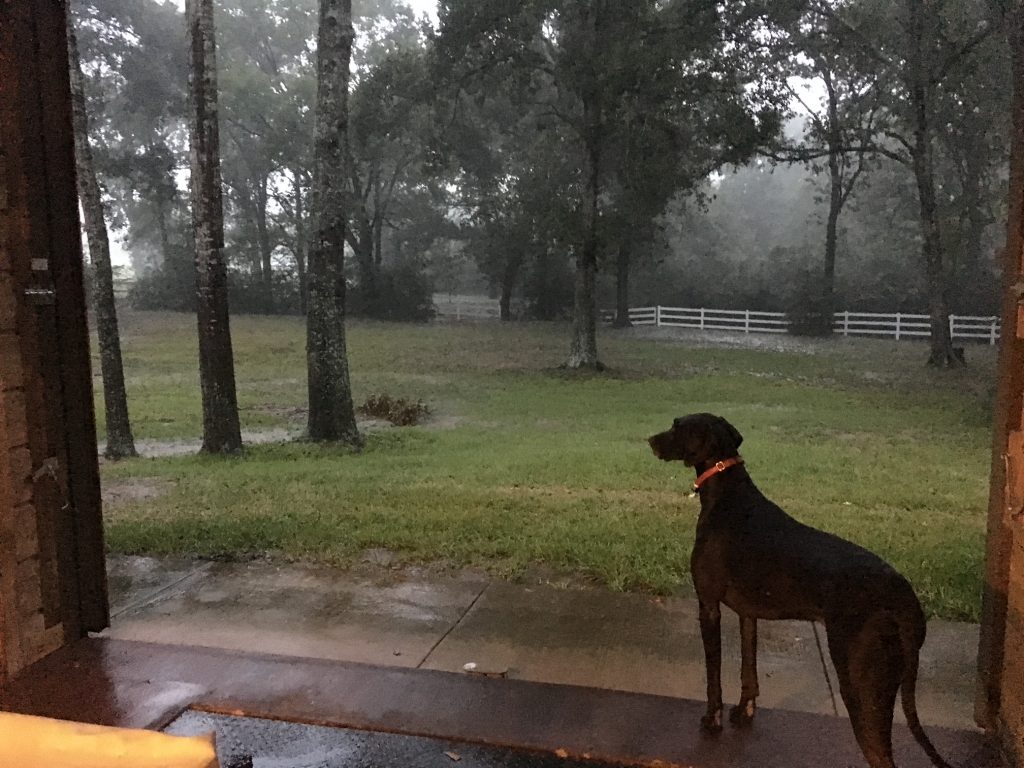
Daisy during Tropical Storm Harvey.
Vaccines. Make sure your pets have updated vaccines. This is especially if you are taking them somewhere. Accordingly, you can see vaccine reports in Wag2Whiskers
Pet photos. If you are concerned about being separated from your pets, you should plan to have detailed photos. At any time, you can add these onto Wag2Whiskers for reference.
Pet identification. As a good practice, make sure you clearly identify your pet. Some ways to do that include:
- Have your pet microchipped.
- On the pet’s collar, include your pet’s name, your name and phone number, your vet’s name and phone number, and emergency contact (outside of the hurricane path) in a plastic bag and taped to the collar.
Muzzle and leash. A dog may panic if there is any damage, so consider having a muzzle on hand. And, make sure their leashes are handy.
For cat and other small animals, it is helpful to have portable creates ready in the event you need to contain the pet.

Home Preparation
First aid kit. Replenish your first aid kit as needed. To this point, check medication expirations and discard old medications. Also consider emergency vet services may be limited during or after a storm, so have basic medications on hand to handle cuts, dehydration, etc. Also, if you pet gets nervous in storms, talk to your vet in advance about medications that can help with anxiety.
Refill medications. Give yourself enough time to refill medications and supplements prior to the hurricane event.
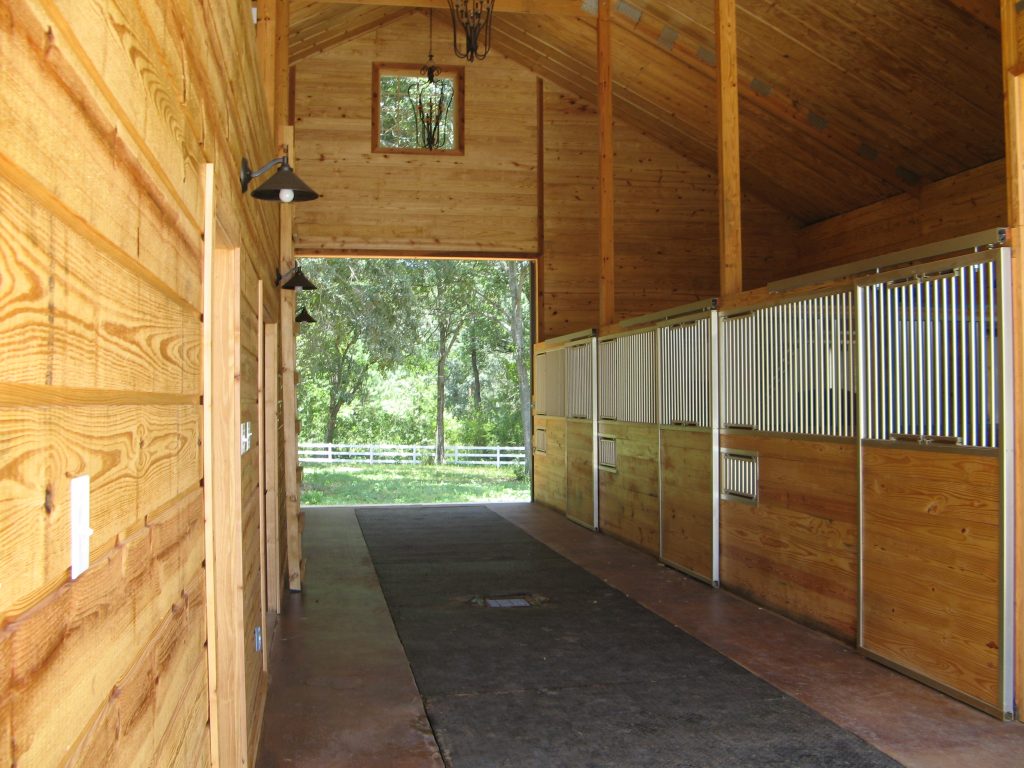
Button down the hatches. With these storms comes high winds. Something as innocuous as a feed bowel or water bucket can become a projectile.
Stock up on your pet food. I prefer to have 3 weeks supply on hand. If a large hurricane arrives, the supply chain can be easily interrupted. Additionally, check your supplements and order early if necessary.
Water. If you have a well, get a generator (and test your hookup prior) so that you have water during the duration of any prolonged power outage. Also, fill buckets in advance so that you have clean water for your pets. Remember, you can also fill plastic trash cans.
Gas up all vehicles and tractors and fill gas cans. Gas may be scarce after a storm, so make sure
you stock up in advance.
Download your Hurricane Preparation Checklist for your Pet:
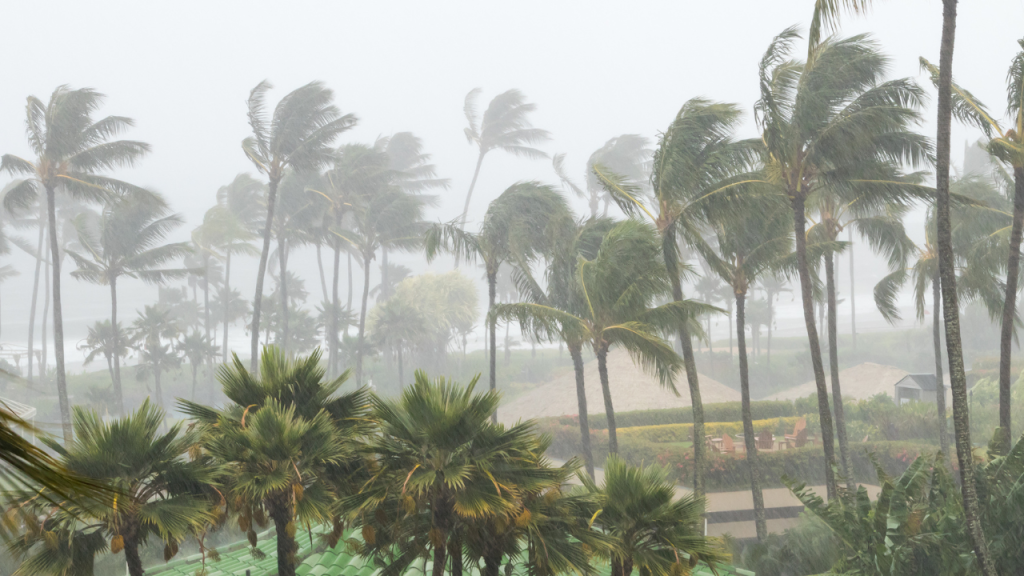
You and your family
Much is similar with your preparation for your pets. We often think about making sure we have food, water, medicines, gas, flashlights and batteries. But, here are a few additional considerations based on what I learned from riding out Category 5 hurricanes.
Planning
Have a plan. Now that you have addressed your animals, where will you stay? Do you have a room to huddle in if a tornado comes? Have you designated an emergency contact outside of the storm path?
Prepare for the heat. Normally in Southeast Texas, hurricanes come when it is hot and humid. What is your plan if you are out of power for days with 100 degree temperatures?
Prepare your home
Get your home ready. Assess your insurance coverage in the event of a storm and potential water damage. Make sure your key electronic devices and air conditioners have surge protection. Seal windows and doors, as we often see horizontal driving rains that can penetrate poor seals. Secure documents in safe place and consider moving valuables that could be damaged by water.
Also, before the storm hits, take a video of your home and valuables. This could be useful if you have an insurance claim.
Charge batteries. If power is out, what is your plan to charge your cell phone, tablet or computer? Think about how you get information and make sure you can power it for days.
Septic systems. If power is out and your septic tanks fill up with rain, how will you address this? Incidentally, this happened to me during Hurricane Ike. Fortunately, we found a septic truck driving through the neighborhood, and he pumped us out).
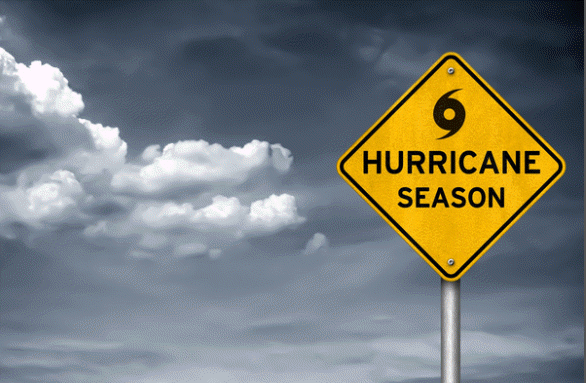
Generators. How much gas does your generator use and how long does a five gallon gas can last? You will definitely want to know the answer to this question before the hurricane hits!
Refrigerators. If you are going to be away from a location during the hurricane event, empty out the refrigerator in advance. We learned this the hard way at my office during Hurricane Ike. The refrigerator/freezer was full and after having no power for six days, cleaning out the refrigerator was an unpleasant experience.
Download a checklist
Find a non-pet checklist that works for you. I found the Florida Division of Emergency Management has a great one page checklist.
In all, hurricane preparation for your horses and barn takes advanced planning. Doing it right will ease some of the stress associated with an upcoming storm and help you safely navigate the storm with your animals.
To see other blogs:
